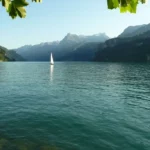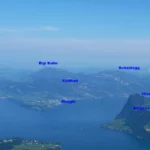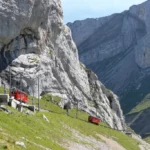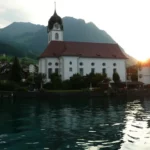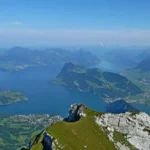Last Updated on 26/02/2023
Lucerne (Luzern) is one of the most beloved Swiss cities for tourists. Lucerne old town and attractions are enough for whole day visit. It can be also a good rainy day option. But staying here for a long time to explore the lake is probably not the best idea: there are many people, transports, and the view is not the same as further along the lake, where the mountains are higher and closer.
The statement that Lucerne is surrounded by mountains, which I have repeatedly come across on the sites, is not true. There is only one mountain nearby – Pilatus. And you can climb it not from the city itself, but from the suburb of Kriens. However, the Reuss River is beautiful, and away from the center, for example by the ramparts, there are quiet, pleasant residential areas.
Lake Lucerne. 1. Brunnen, Schwyz, 2. Swiss trail. Lake Uri
4. Pilatus mountain, Lake Lucerne Rigi, Tierpark Goldau
Lake Lucerne. Map of attractions
Jungfrau region. 6. Meiringen
Bern – fontains, cathedral and clock tower
Switzerland by car
Don’t forget about Tellpass – a advantageous way to travel around the lake.
How to get there
As a major city, Lucerne enjoys convenient transport links. From here it is easy to go on excursions into the mountains by train or boat.
It’s difficult to navigate here: there is a overcrowed combination of the railway station, the pier and the bus station. The schedule is also not easy to figure out, and you have to be careful with the trains. In our case, there were two trains on the same platform, one of which departed later. And it was necessary to run on the platform further quite far.
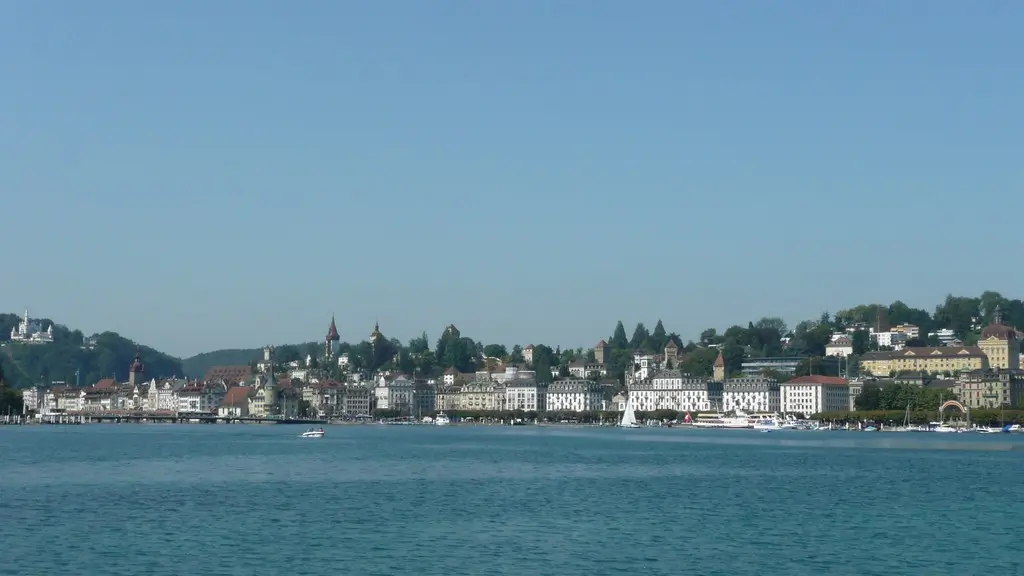
History
The settlement on the site of Lucerne has existed, presumably, from Roman times. In the 8th century the monastery of St. Leodegar, that was under the control of a monastery in Murbach (Alsace), was founded. The city was founded in 1178, when the parish passed from the monastery in Murbach to Lucerne. In 1220, when the Saint Gotthard Pass was opened, a fortress wall with towers was erected. In 1290 the Habsburgs gained control over the monastery and the city.
From 1386, when the victory at Sempach was won, Lucerne gained independence from Austria. Until the end of the 18th century the city-state was ruled by a council of representatives of 29 clans. After the victory of the Protestants over the Catholics in 1712, Lucerne, as a Catholic city, lost its influence. In 1848 its inhabitants did not accept the federal constitution and Bern became the capital of Switzerland.
Lucerne map
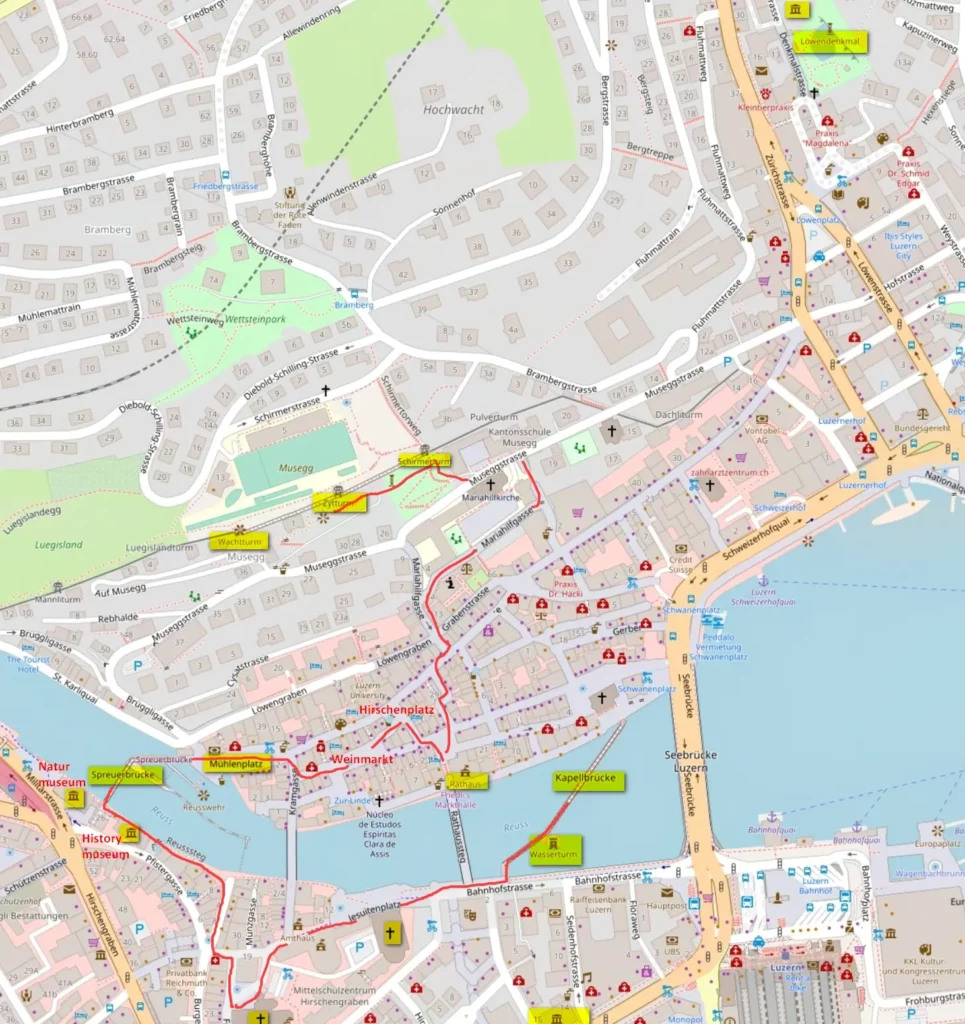
Lucerne old town
The chapel bridge (Kapellbrücke) is most often found on postcards with views of Lucerne, and deservedly so. Built in 1333 as part of the city’s fortifications, it is named after the nearby chapel of St. Peter.
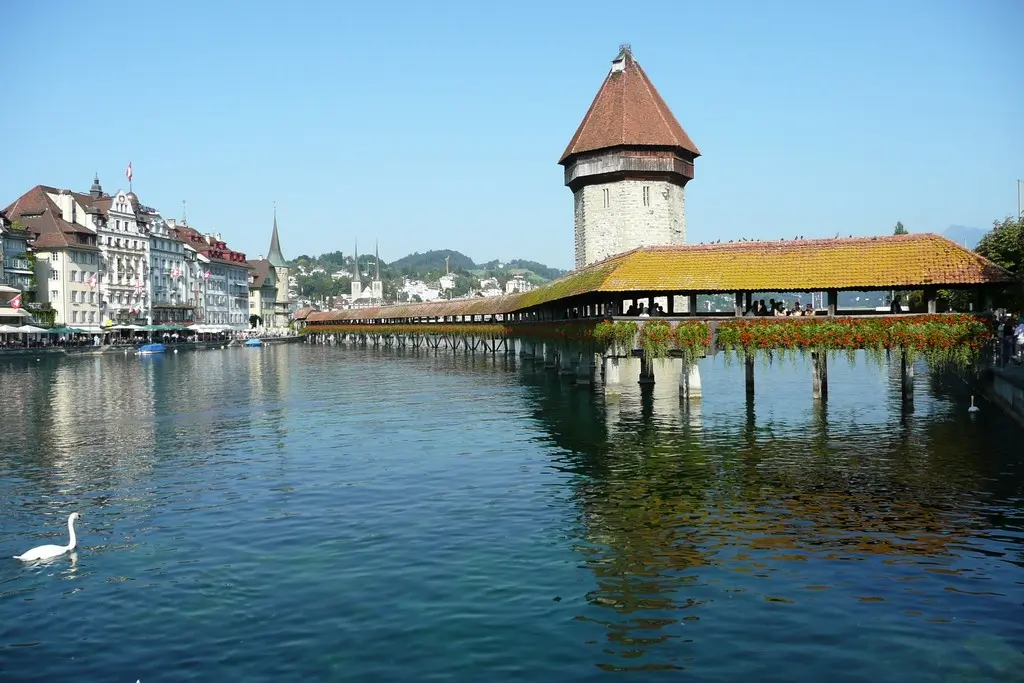
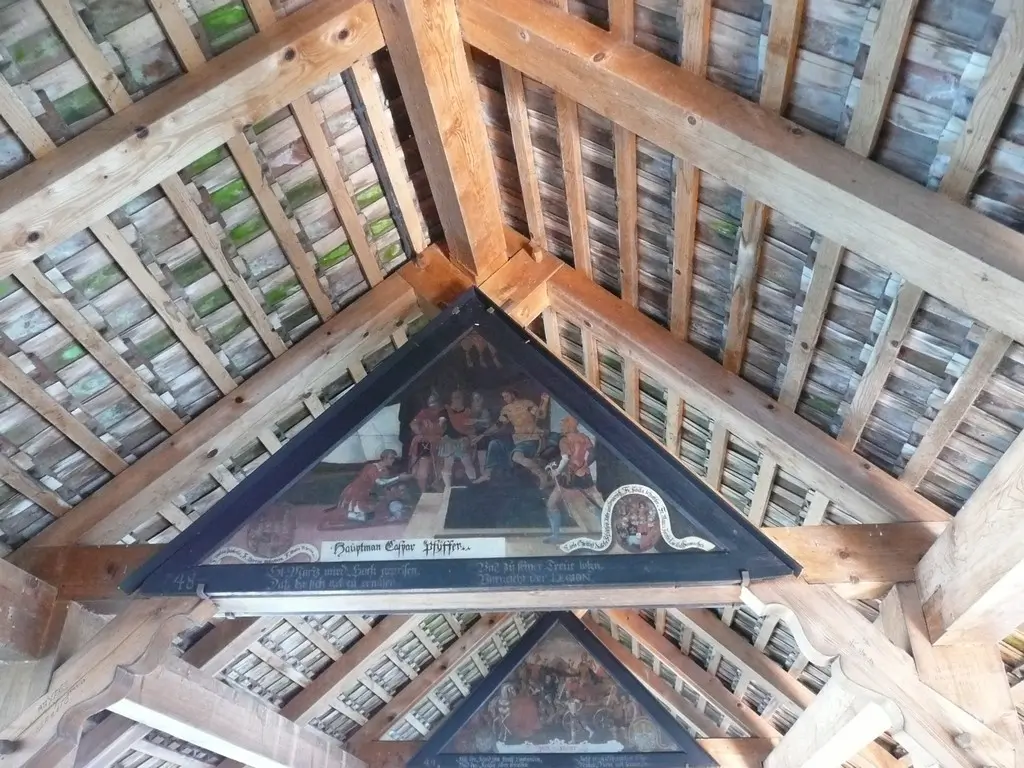
The wooden bridge on stilts is very picturesque. Paintings have been partially preserved inside. They were added in the 17th century and illustrate scenes from Swiss history. Unfortunately, due to a supposedly unextinguished cigarette, a large part of the bridge burned down in 1993 and was rebuilt..
Near the bridge is the Water Tower, which was also part of the city’s fortifications. It was used as an archive, treasury, prison and torture chamber.
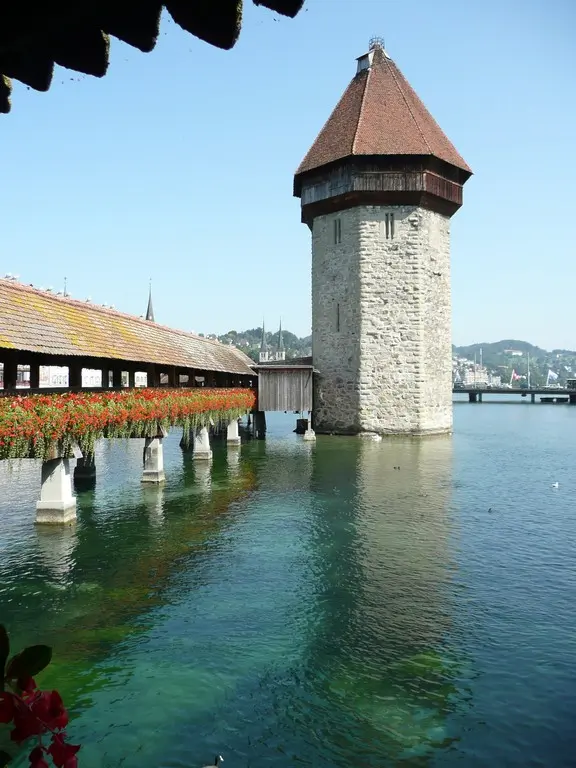
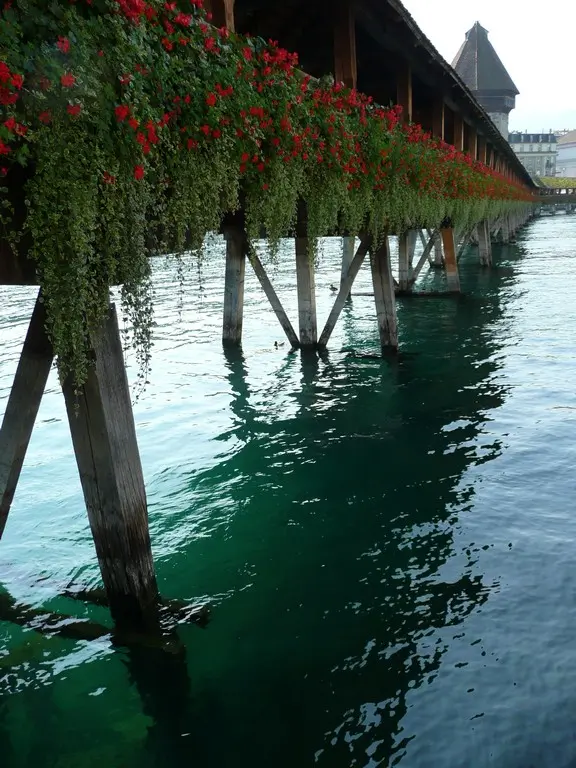
Left bank
On the left bank near the bridge is the church Jesuitenkirche. It’s the first large Baroque church in Switzerland (1666).
Next to it is the Ritter’s Palace (Ritterscher Palast). It was built in 1557 in the Italian Renaissance style for the head of Lucerne, Lux Ritter. Later, since 1574, the headquarters of the Jesuits was located here. And now it is the cantonal government sits. Here you can see the painting “Dance of Death”.
Walking along the street behind the church, you will come to the gothic Franziskanerkirche. It was built in the second half of the 13th century.
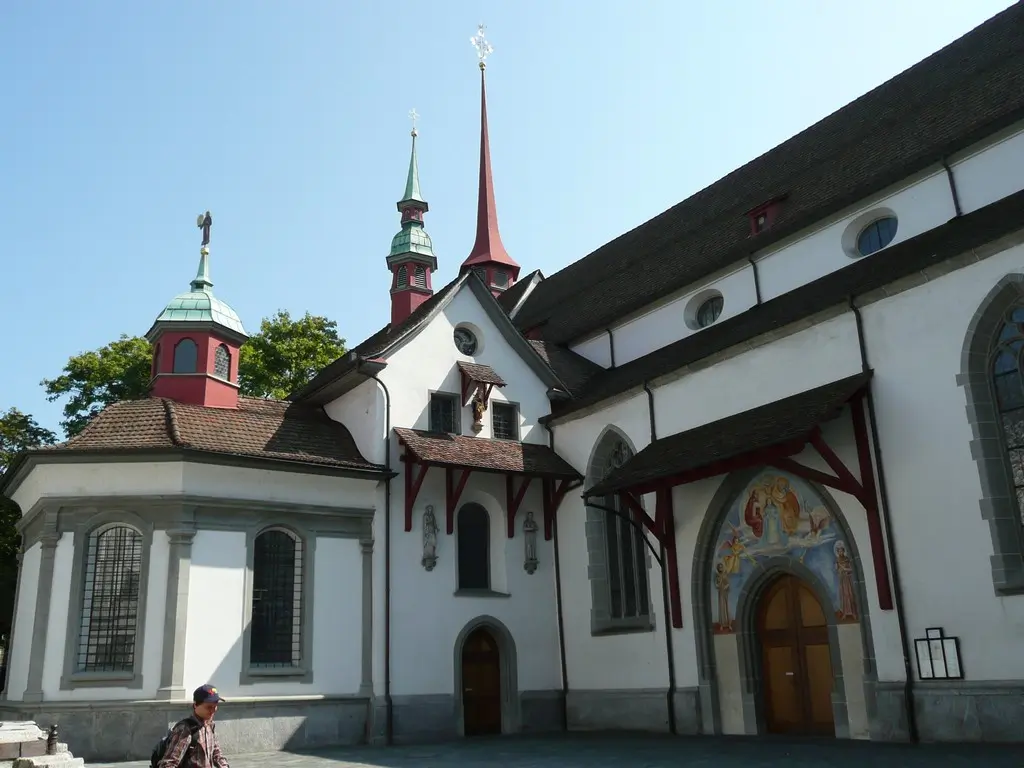
We return to the river and get to the second wooden covered bridge – Spreuerbrücke (1408). The painting “Dance of Death” was added in the 19th century.

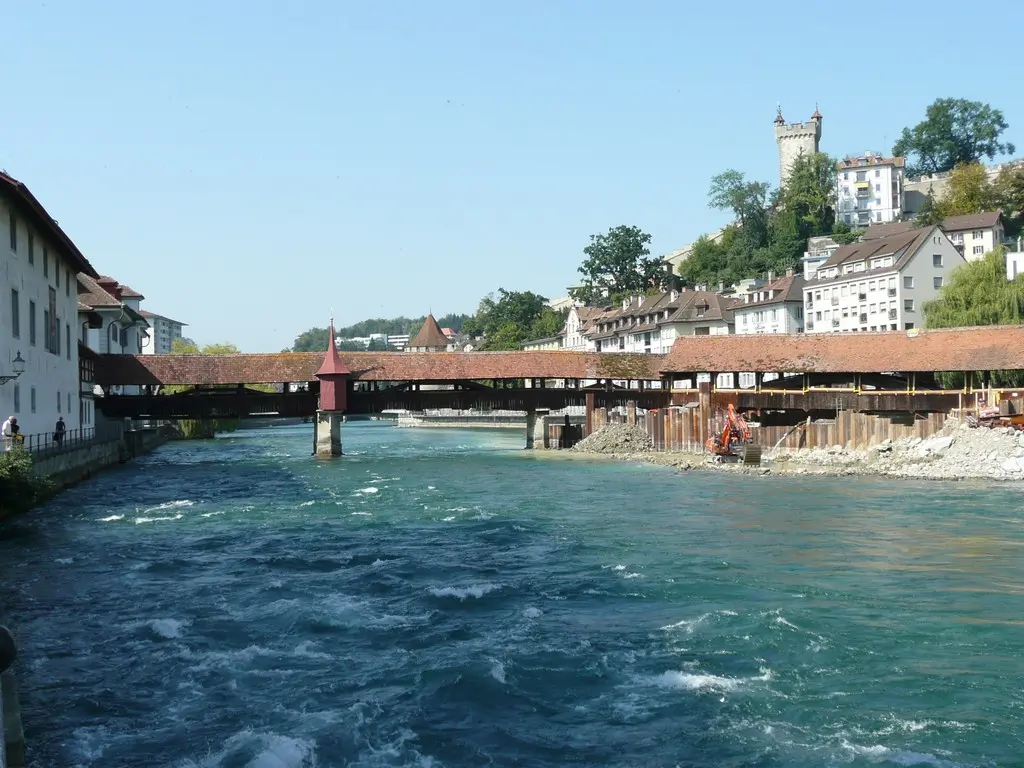
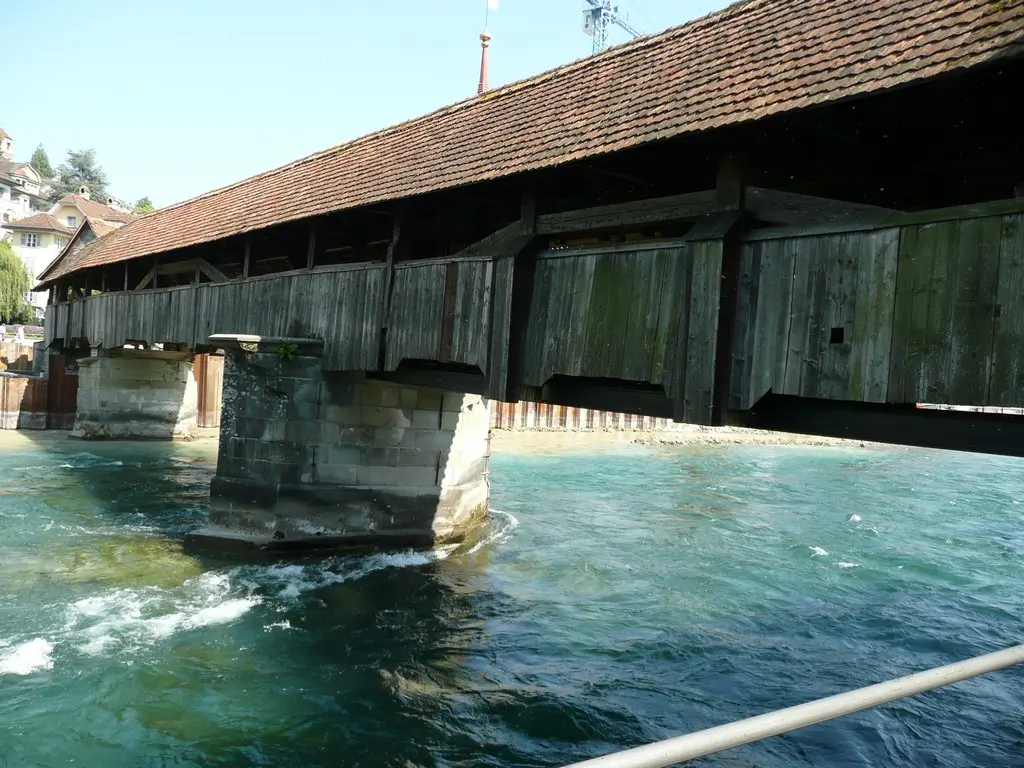
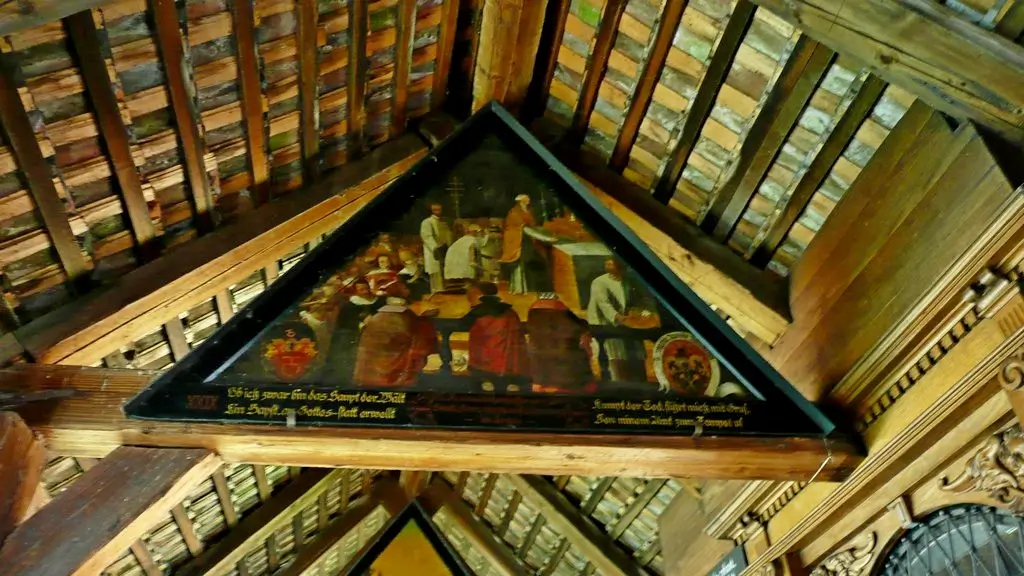
Right bank
On the right bank of the river there is a pedestrianized old town. Old houses with painted facades have been preserved here. Most interesting are the Weinmarkt, where swore an oath of alliance with the three cantons in 1332, Hirschenplatz and Kornmarktplatz, and part of the Museggmauer ramparts.
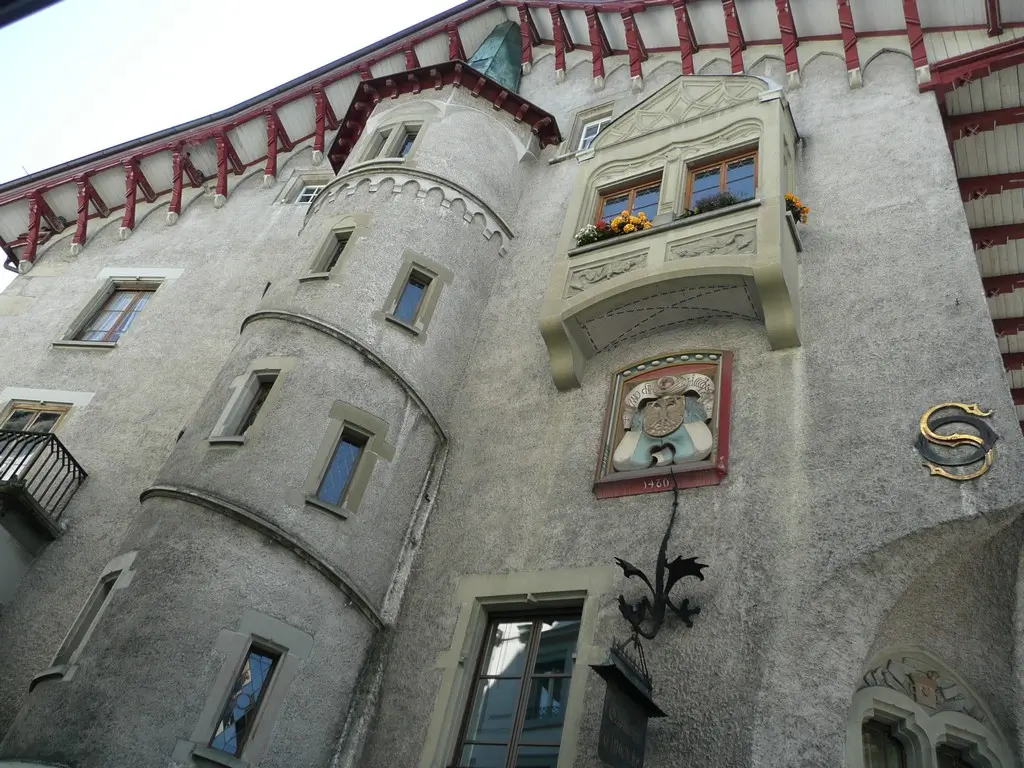
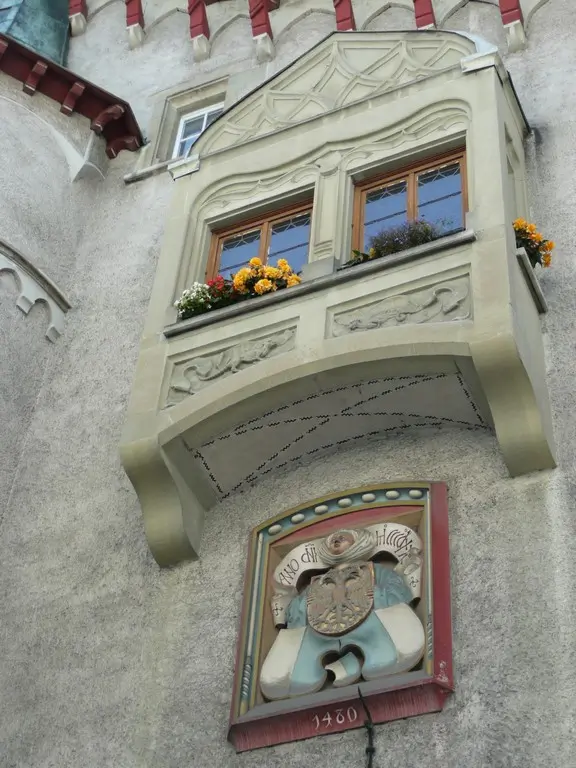


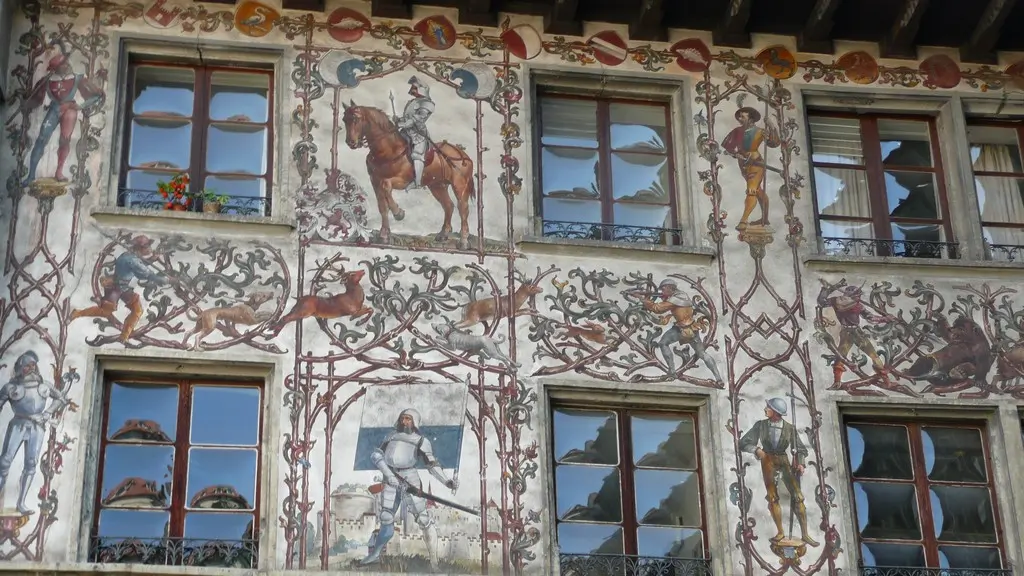
Follow me
You can climb to the rampats at its beginning or at the end. But the most interesting part is in the middle (passage along Marianhilfgasse street). You can walk along the wall and to climb three towers (from 8.00 to 19.00 from Easter to November). The wall was built in 1386 and has remained practically unchanged. Zyt Tower is the oldest clock in the city (1535).


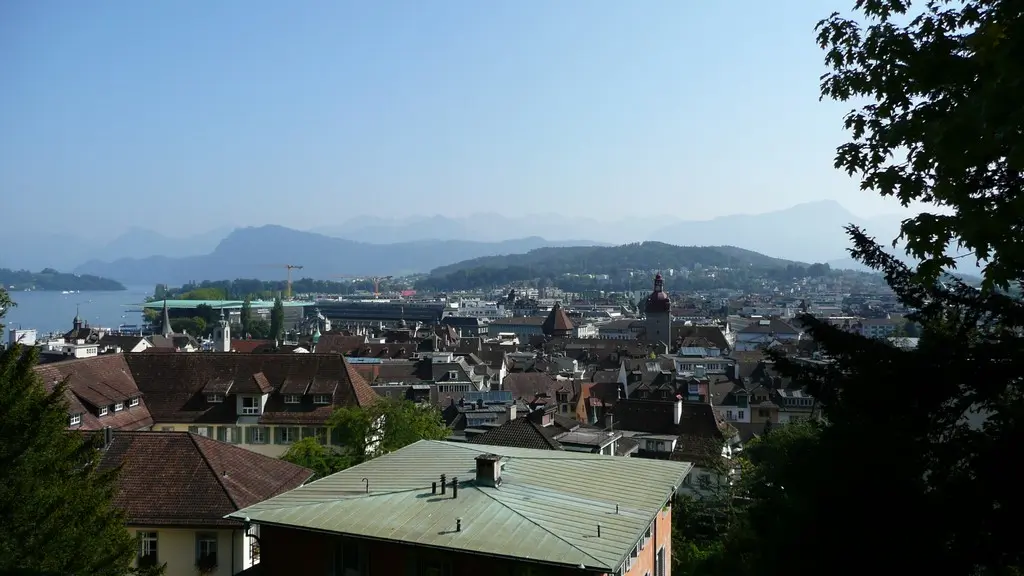

The town hall (1606) is located on the Kornmarkt near Reuss. It was built in the style of the Italian Renaissance. And on top was added a roof like a farmhouse to protect it from the bad weather. Under the arches of the town hall on the banks of the Reuss, vegetables and fruits are sold every week.
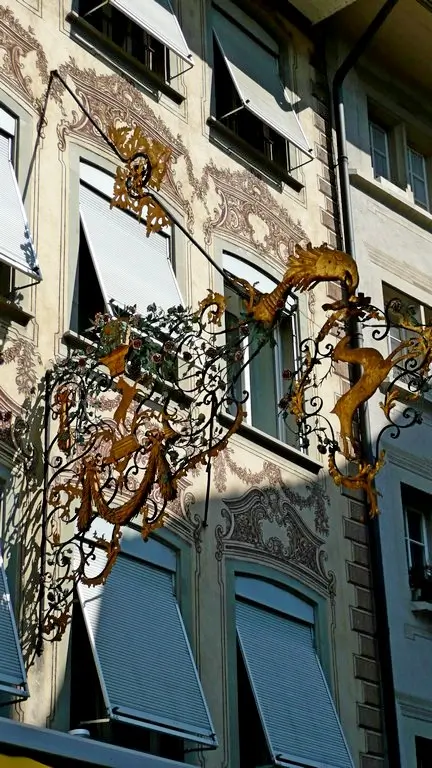
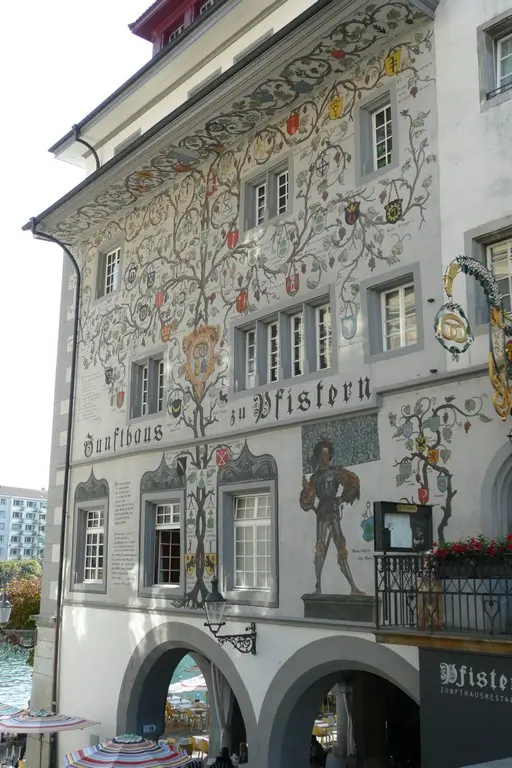

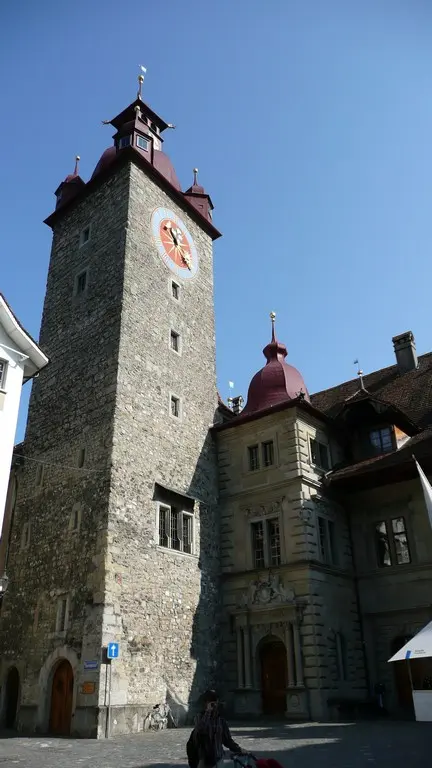

Other Lucerne attractions
The Dying Lion Monument is a must-see sight outside the historical center. The sculpture dedicated to the Swiss guards who died during the French Revolution, defending the king. Mark Twain said that this is the saddest and most touching piece of rock in the world. So the stream of people who want to gaze never stops.
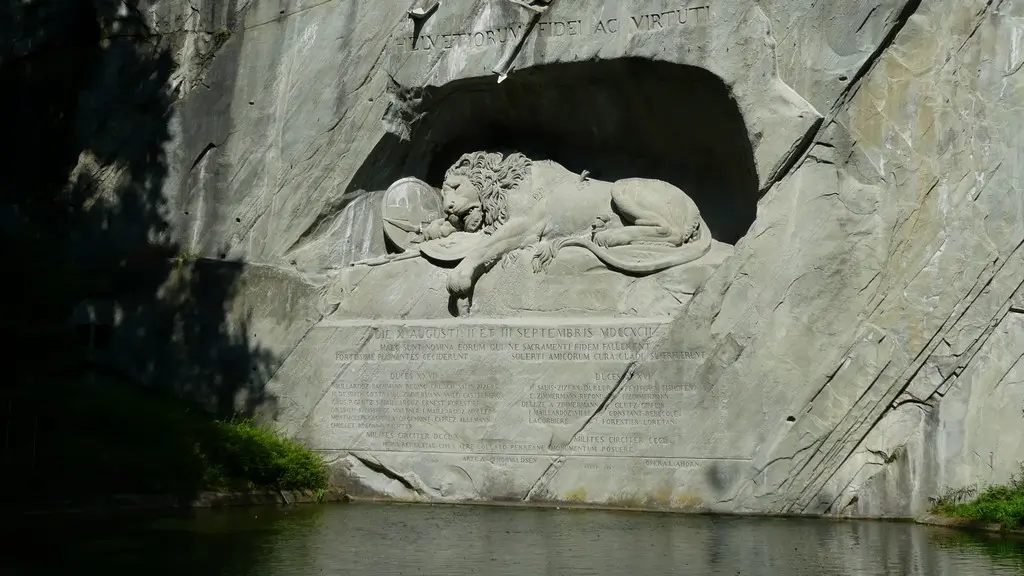
Next to the Dying Lion is the Ice Garden Museum (Gletschergarten). In the museum, you can see the traces left by the glacier and fossils that are 2 million years old.
A little further, the Alpineum Museum – 3D panorama of the Alps.
There is also a Rosengart Museum in the city, exhibiting a collection of 20th century art, including Picasso, Klee, Monet, Cezanne, Matisse, Miró, Chagall.
Like any big self-respecting city, Lucerne has a history museum as well as a natural history museum.
In the nearest suburb there is the Swiss Transport Museum (Verkehrshaus) with an IMAX cinema and a planetarium. Here you will find antique vehicles, cars, steam locomotives, an exposition dedicated to the construction of the tunnel under St. Gotthard.
From sports entertainment (if you really do not have the strength to walk in the mountains) – an indoor pool. In the summer – city beaches. In winter (from October to March) – an ice center.
But the main Lucerne attraction are mountains and lake. About them, and also how to get to Pilatus, read in the next posts
Brunnen and Schwyz,
Swiss Trail (Lake Uri),
Pilatus,
Rigi.
Do you enjoy the site without cookies? This means that I work for you at my own expense.
Perhaps you would like to support my work here.
Or change your cookie settings here. I don’t use personalized ads


